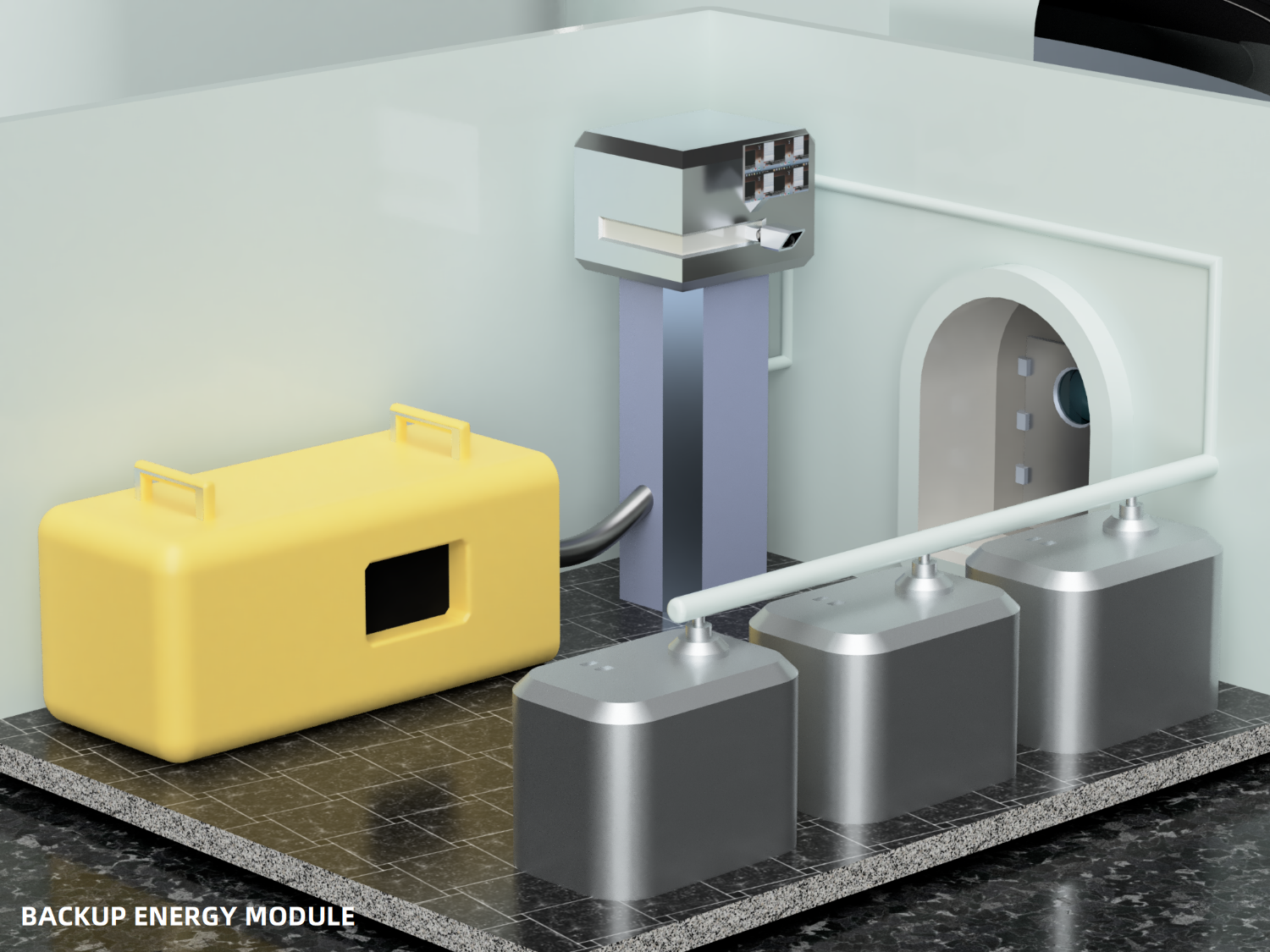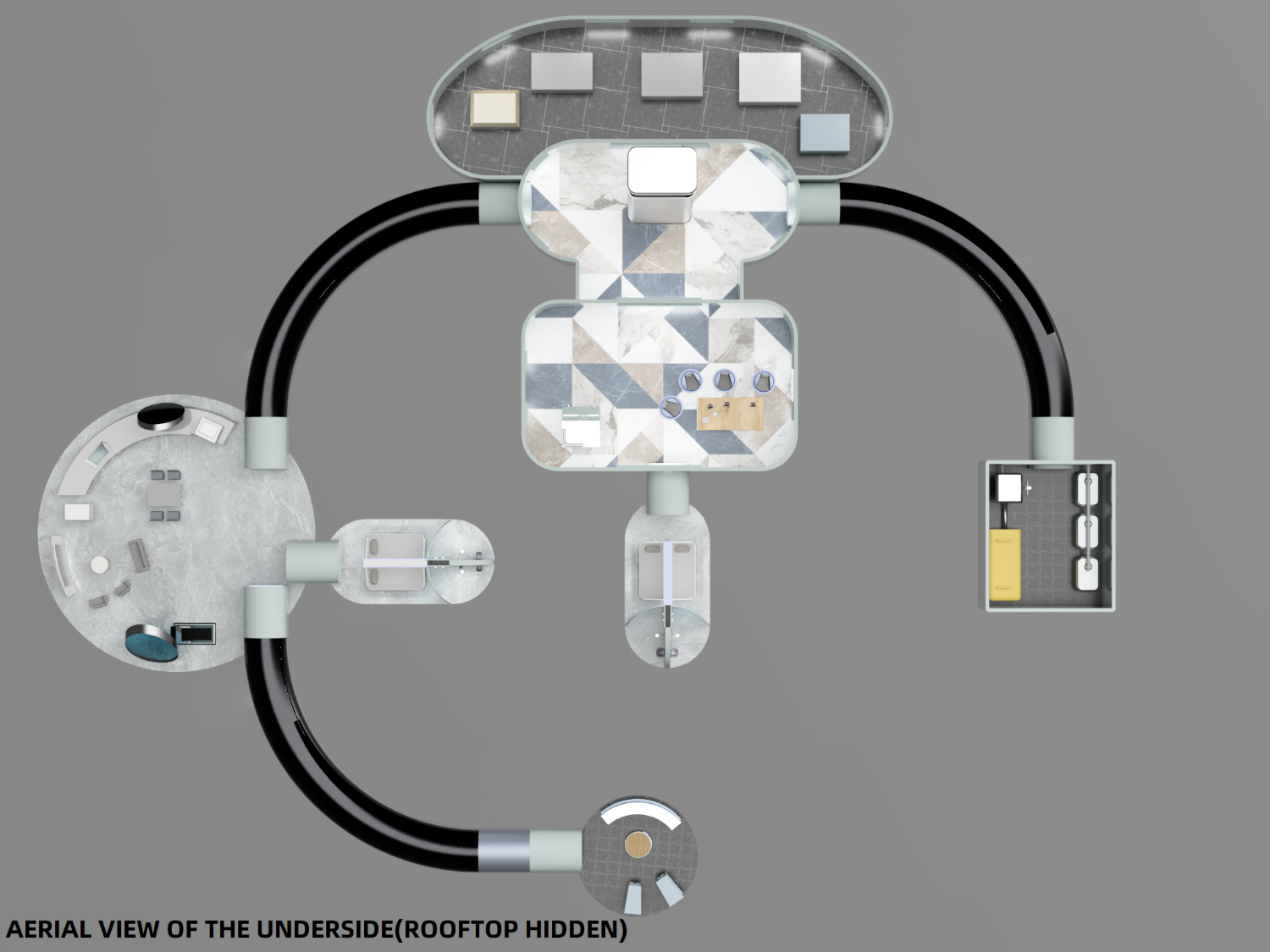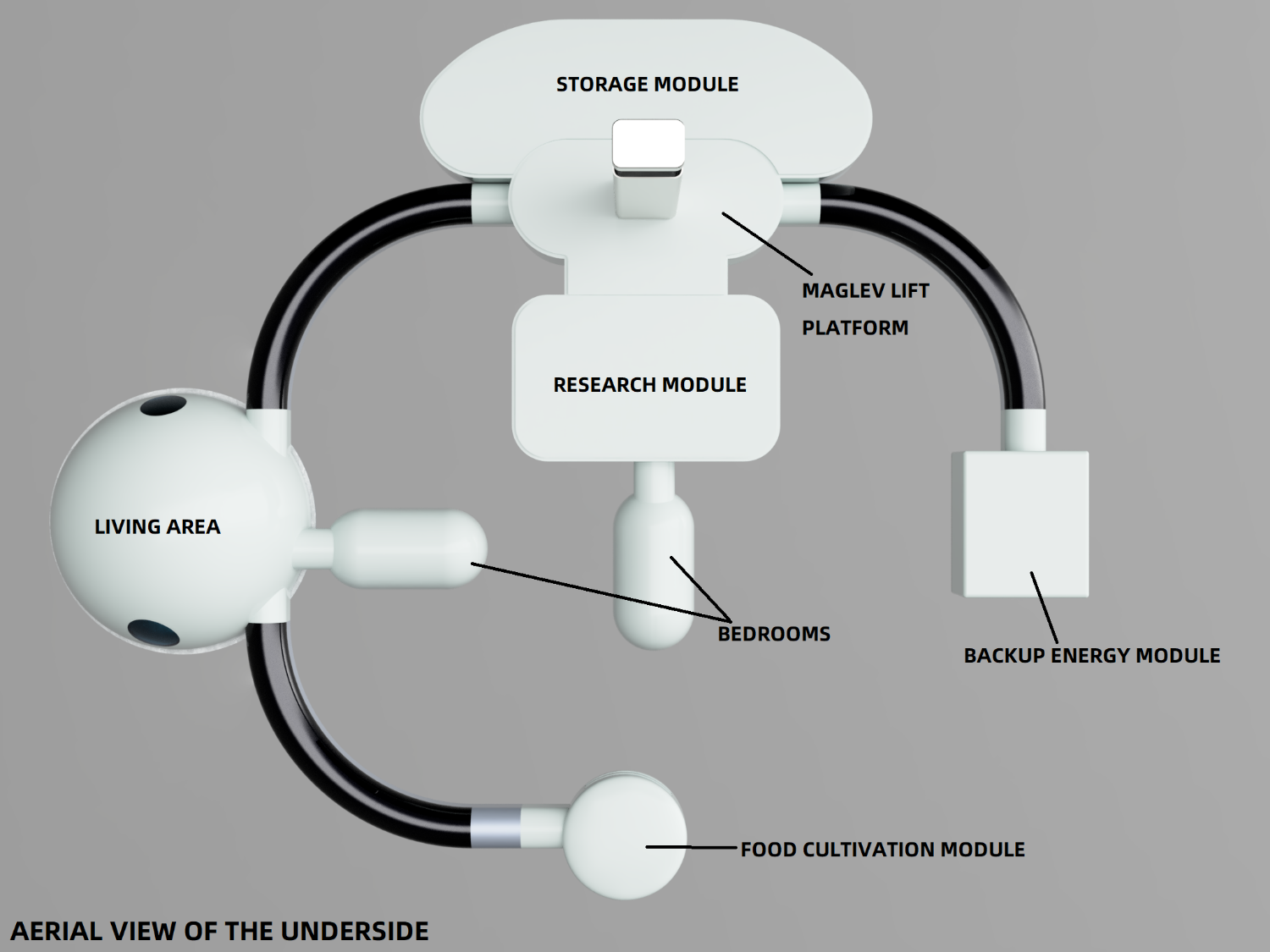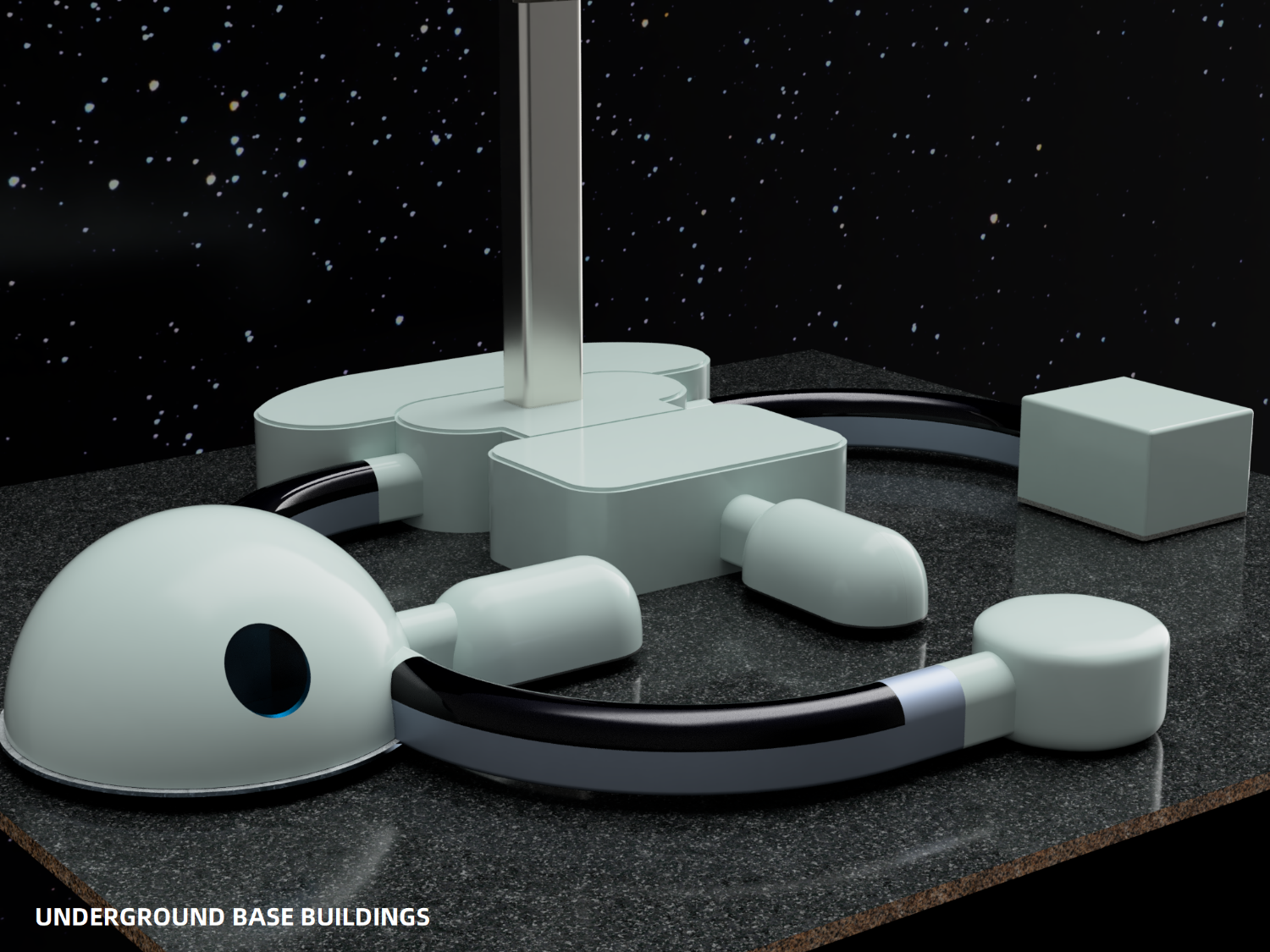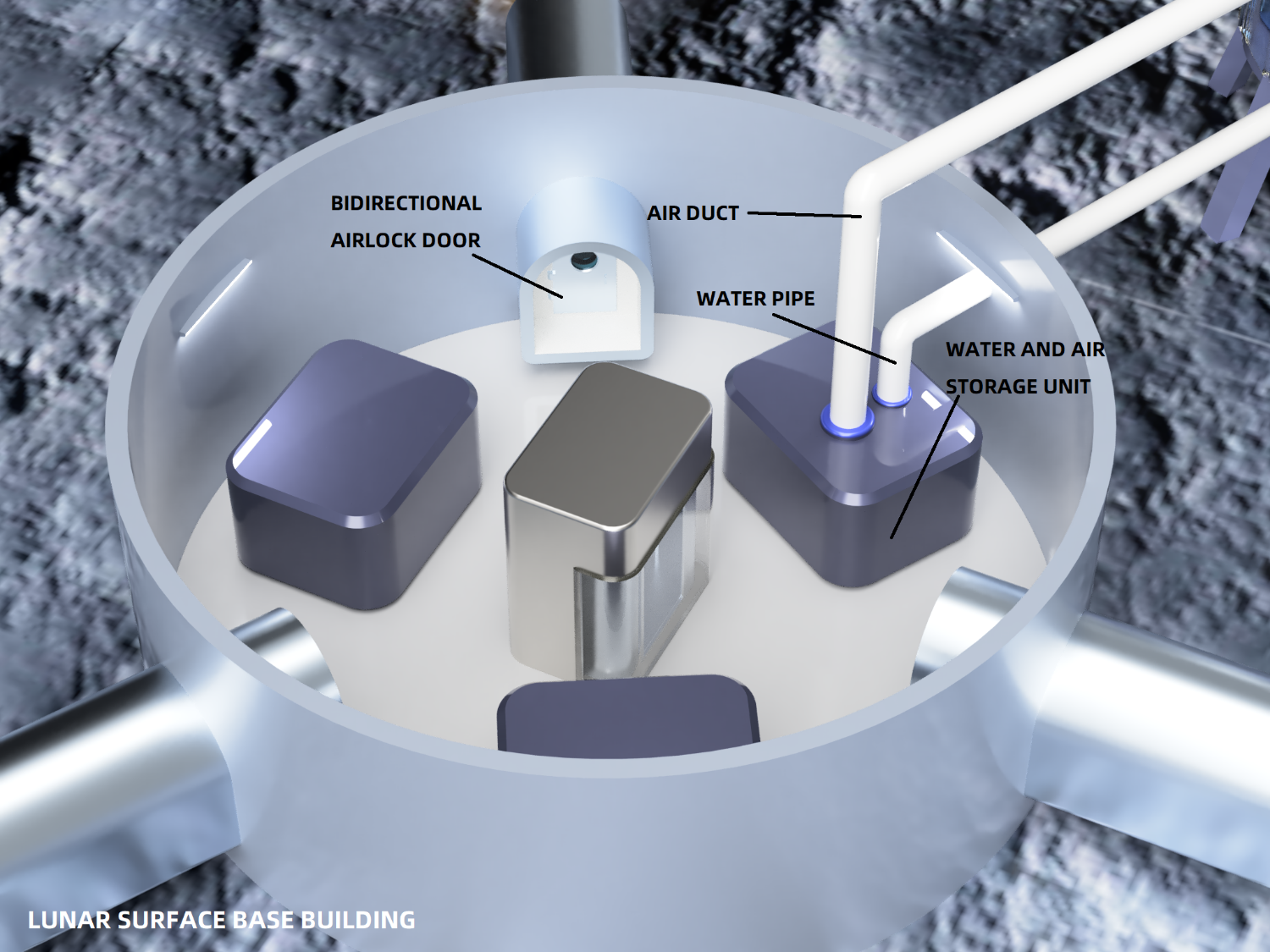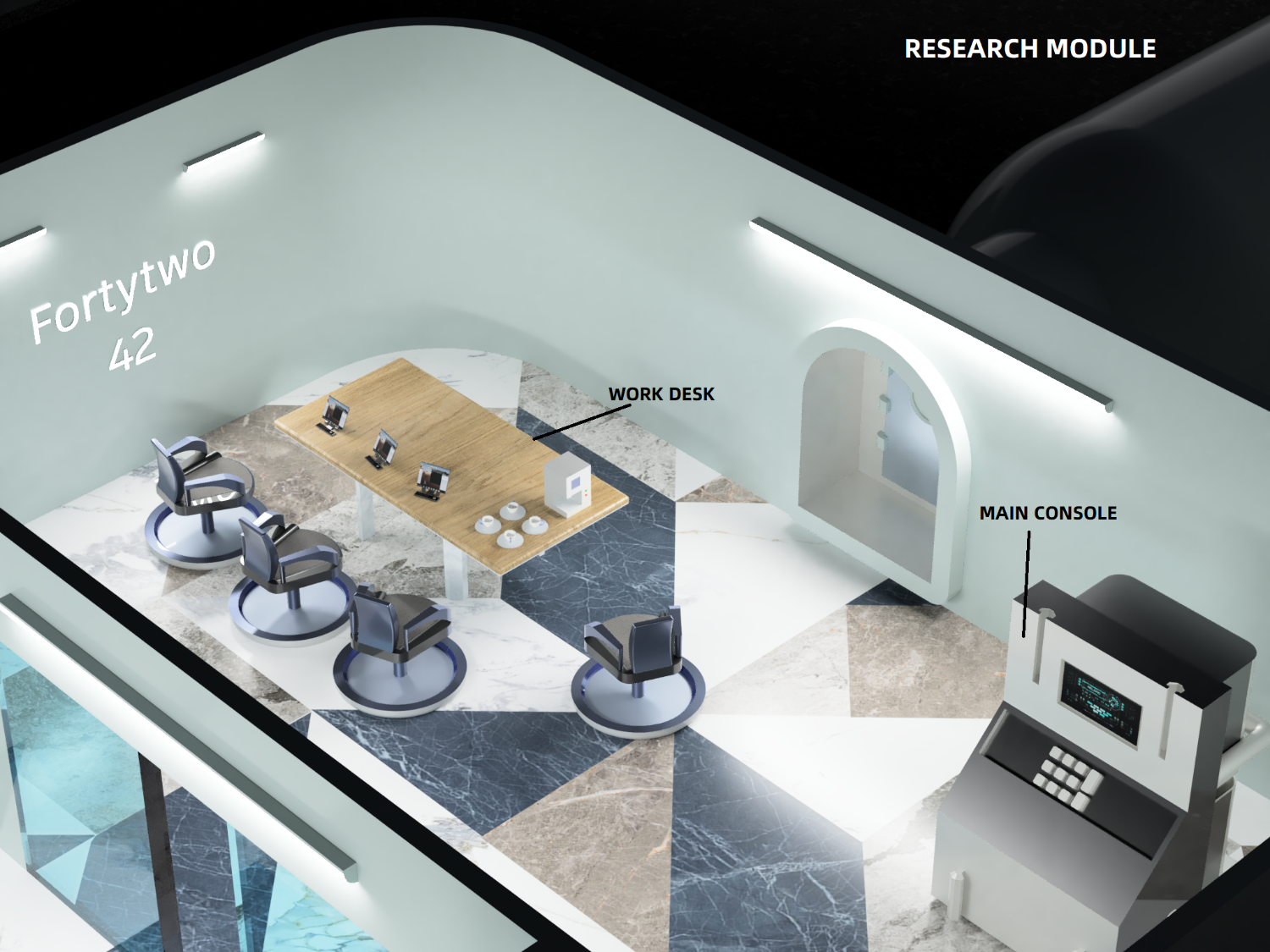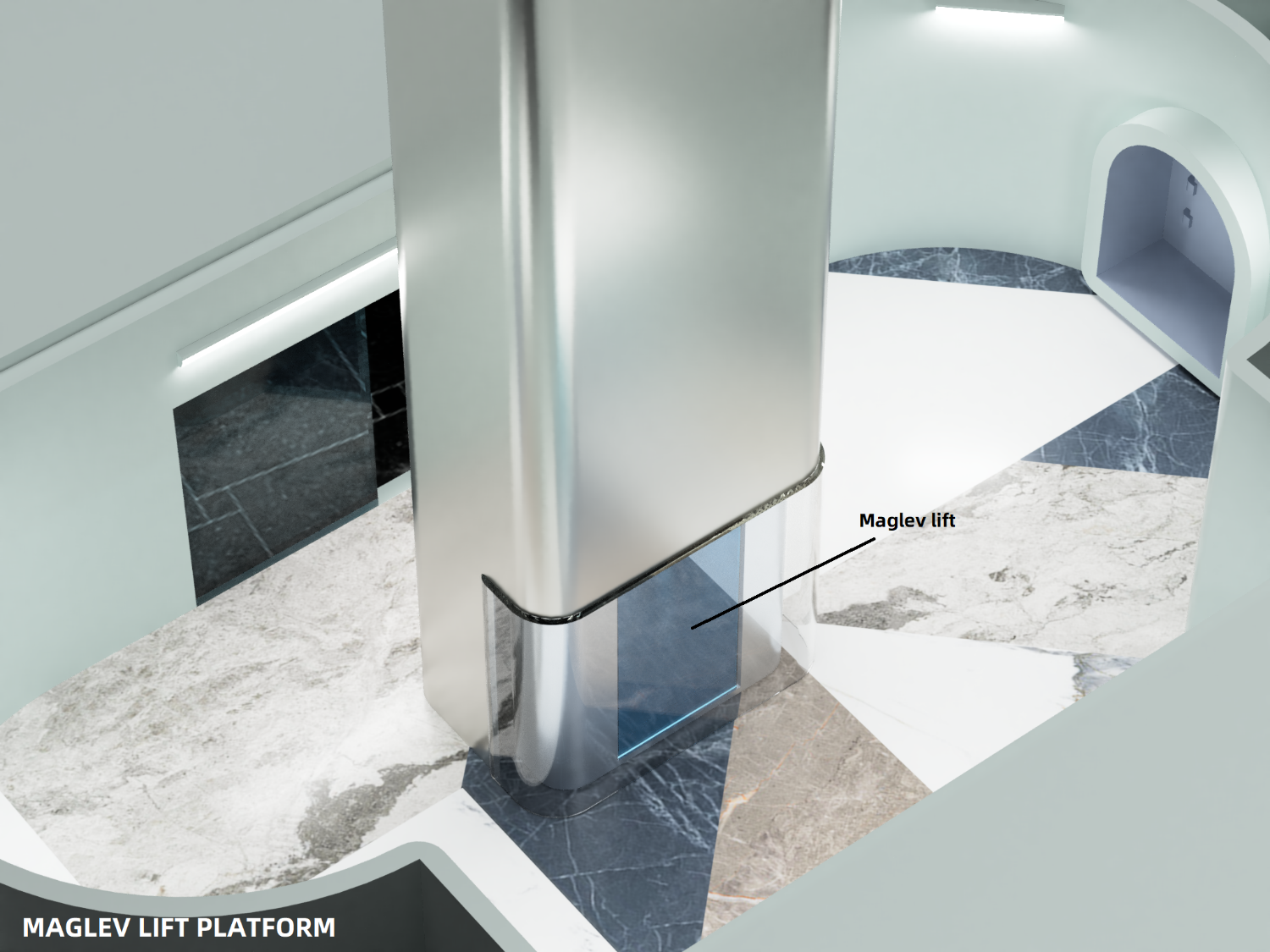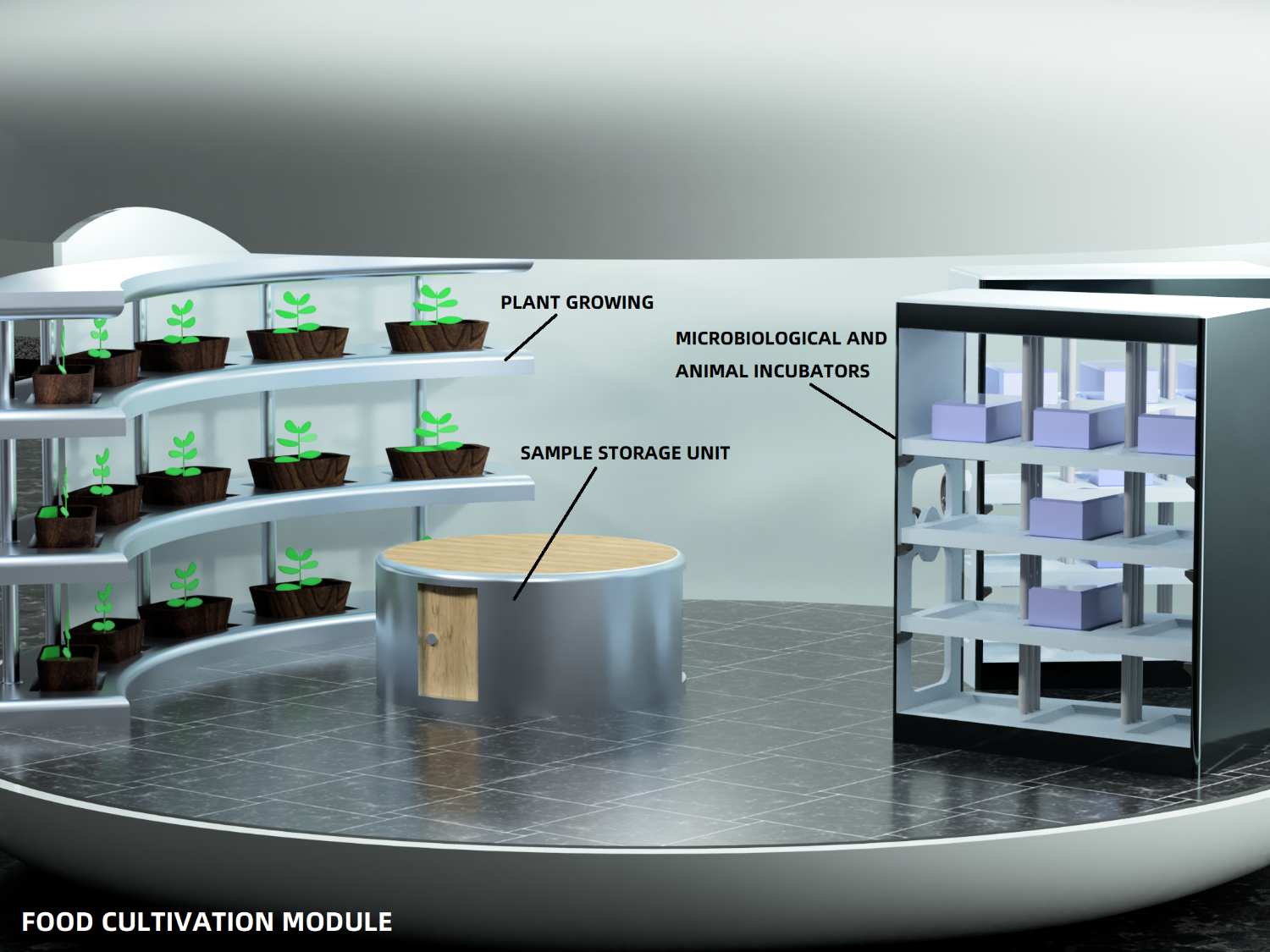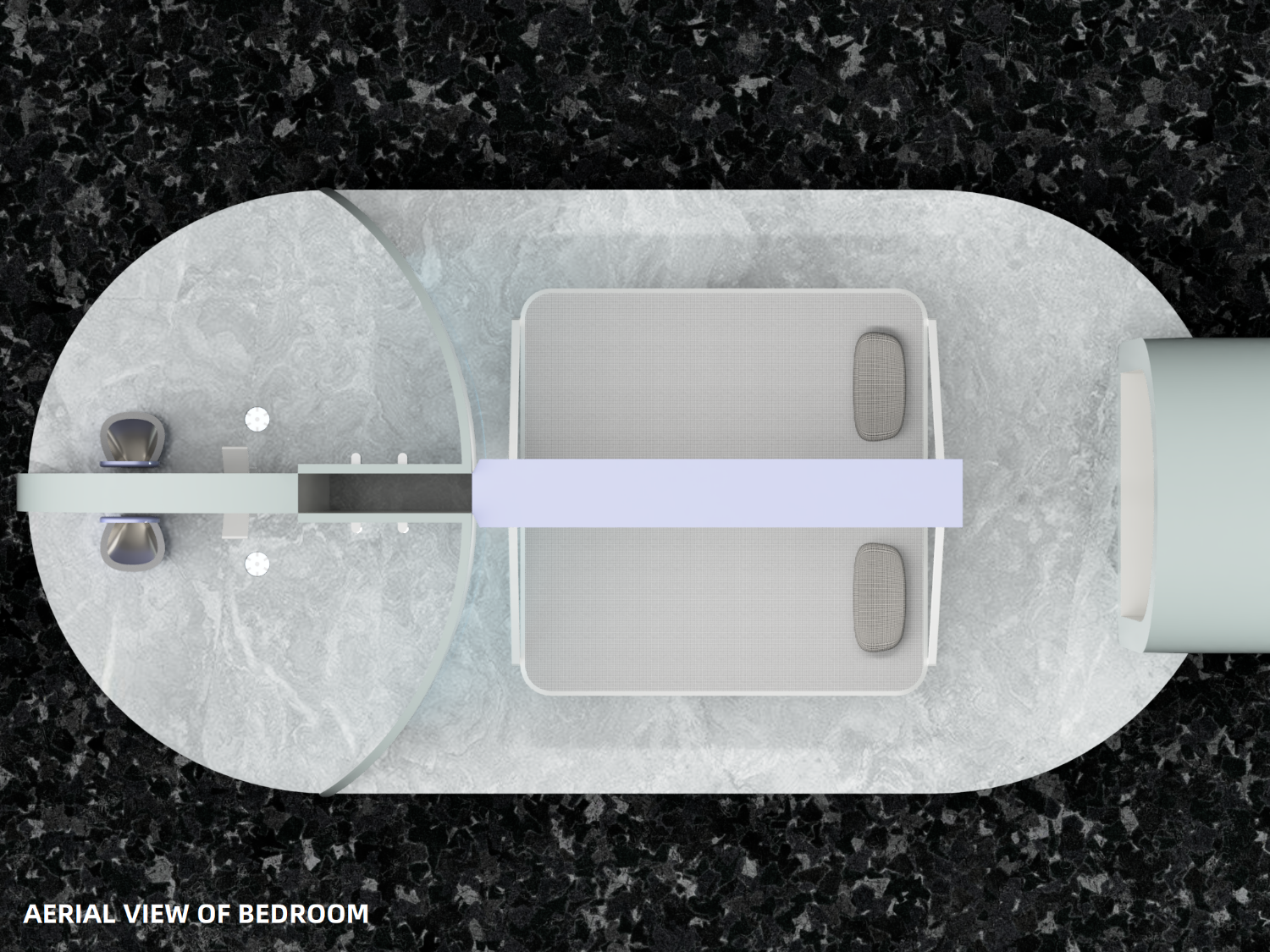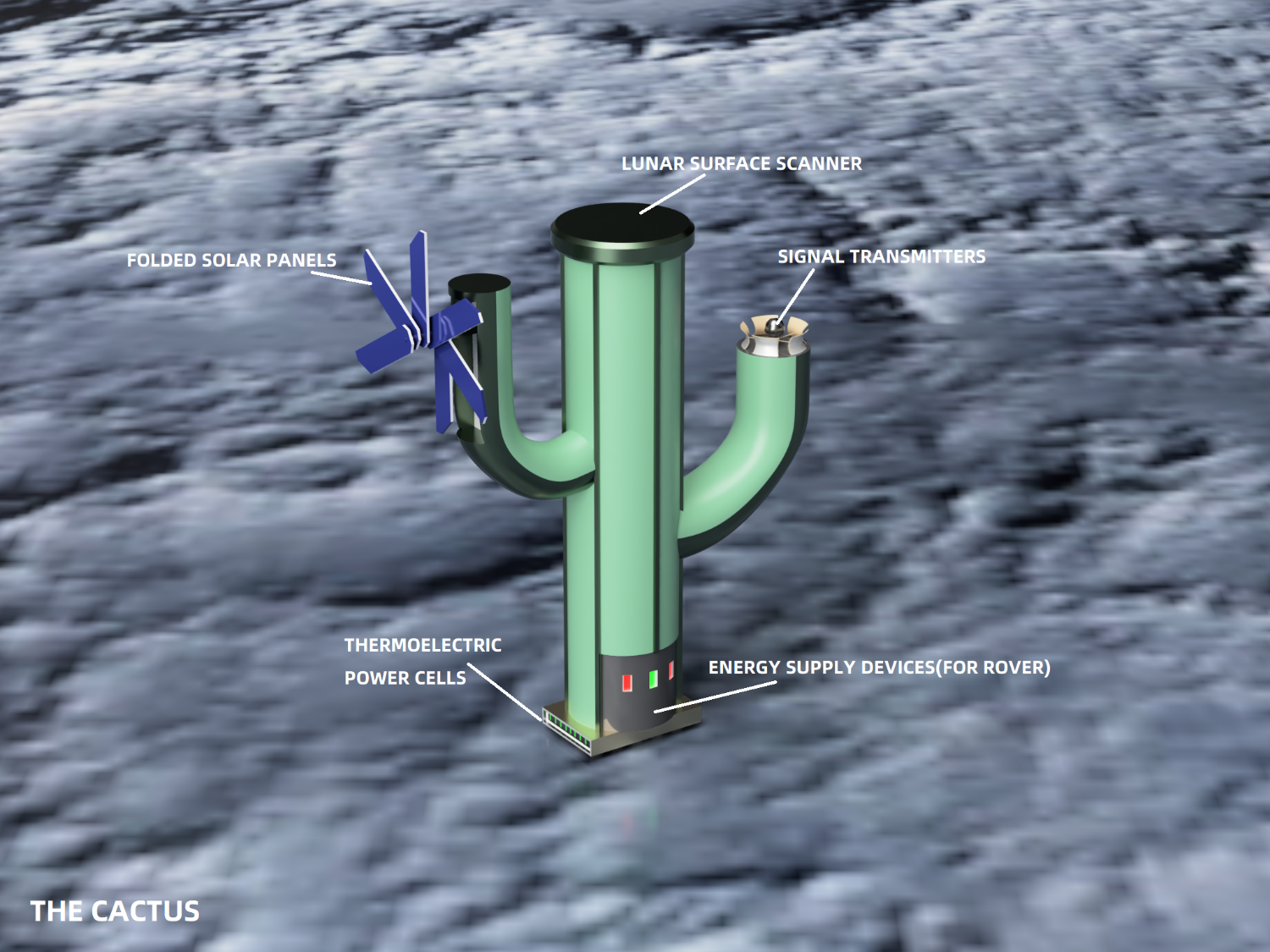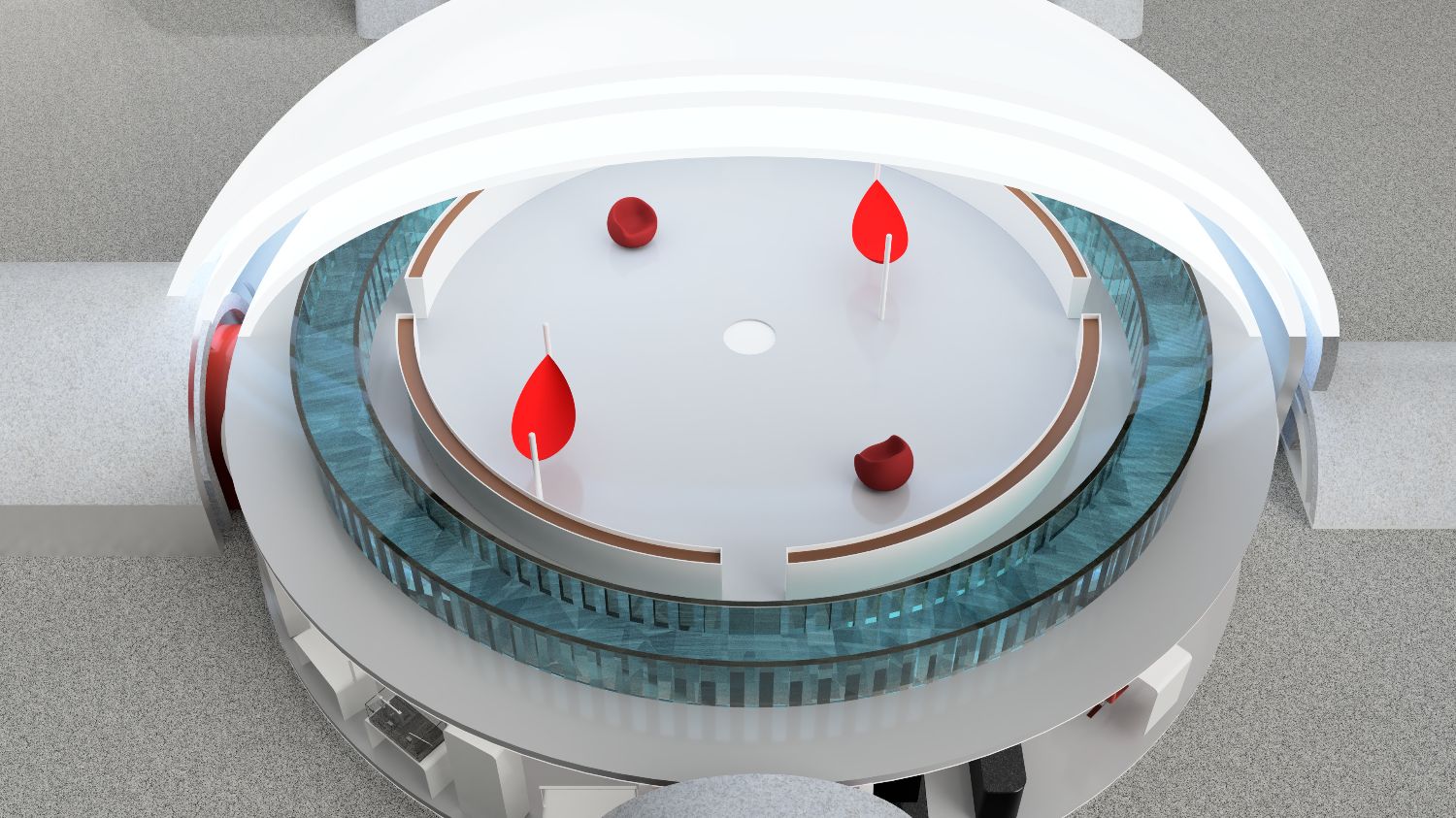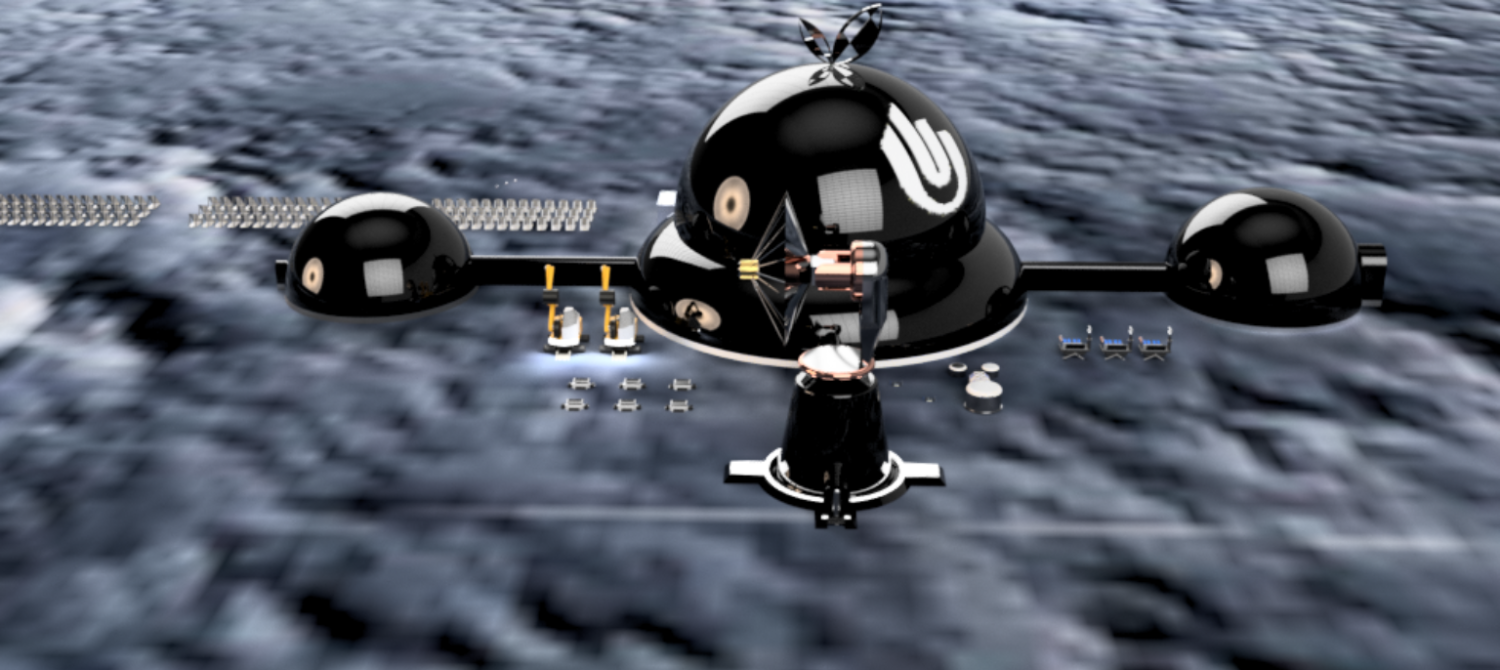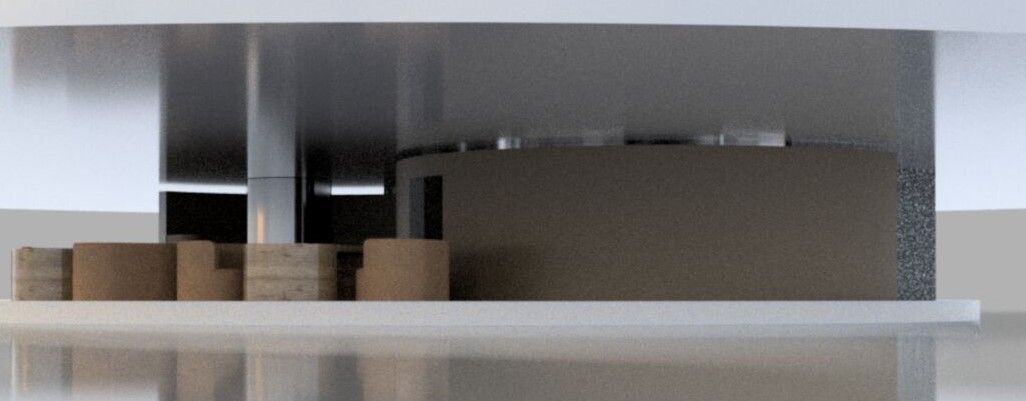Moon Camp Pioneers Gallery 2021-2022
In Moon Camp Pioneers each team’s mission is to 3D design a complete Moon Camp using Fusion 360. They also have to explain how they will use local resources, protect astronauts from the dangerous of space and describe the living and working facilities.
Team: Fortytwo
郑州轻工业大学附属中学 Zhengzhou China 19 2 / 1
External viewer for 3d project
|
Project description
42 is the answer of life and universe even everything exist in the world which calculated by supercomputers,according to Douglas Adams’ novel The Hitchhiker’s Guide to the Galaxy ,the reason why name our team 42 is it could make us stand up to the unknown and deadly universe. The selection of our base is located in a lava tube at the South Pole,as it’s a natural shelter. All the further research will be conducted root here. In the first stage, primarily we could use the International Space Station which was primitively existing there, based on that we would launch unmanned equipments in advance which including vehicles, some construction supplies and some necessary food. What’s more the modular items will be assembled on the moon,surrounding it were lunar cacti and the scanner which analysed the mineral distributed on the surface of moon. In the second stage, our astronauts will start and refine the modules. Therefore, our base will have five parts,such as cargo module, storage module, immediate and backup energy module, self-contained food cultivation module ,research module and living area. |
|||
|
2.1 Where do you want to build your Moon Camp?
We wanna build our base at any complete lava tube on the Moon, as the surface of moon is full of frequent meteorite impacts, high-energy ultraviolet radiation and energetic particles, as well as extreme diurnal temperature variations. Lava tubes not only provided an ideal shelter,but close to nearby mineral resources. The first factor we took into consideration was they have stood the test of time for billions of years which proved themselves to be reliable structures. Second factor was the maglev lifts was accessible to astronauts arriving the lunar surface for work,since the highland areas of the Moon was available to correspondence, so we set a signal station here.Basalt plains was a suitable place to land sites, weathering layer collection, and extracting the underground mineral resources. 2.2 How do you plan to build your Moon Camp? Describe the techniques, materials and your design choices.
Since our base is in the lava tubes under the moon, so there is enough space ideally.Upon confirming the position of living accommodation,we will inflate to form a pressurized environment.We will then use 3D printing technology to build a membrane to reinforce it using lunar concrete.Because of the environmental characteristics of the Moon, we will use folded solar and temperature difference energy What’s more A metal membrane will be added to the construction on the ground to prevent weathering,and the passageway will be constructed directly from high grade dense silica granular cement based concrete, as an external skin. 2.3 The environment on the Moon is very dangerous for the astronauts. Explain how your Moon Camp will protect them. (maximum 150 words)
On one hand, the lava tubes of the Moon would protect the astronauts from lunar dust, radiation and meteorites on the surface of the Moon, but we would strengthen them to prevent the possible collapse of potential risk parts. On the other hand, these subterranean environments can create pressure with air, in this way to imitate 1 atmosphere on Earth, and powerful filters will filter dust and silica to create a breathable atmosphere where the astronauts would enjoy the sunshine. Above all,the cactus would check the surface condition to ensure a safe environment for the rover and the astronauts, and sent information about the mineral deposits to the rover. |
|||
|
2.4 Explain how your Moon Camp will provide the astronauts with:
|
Water
|
Food
|
Power
|
Air
|
|
Obtaining liquid water on the Moon is such a extravagant affair. We had no choice but to use a solar drill to penetrate deep into the lunar interior, melting the ice and extracting further liquid water to transmit to liquid water treatment equipment through its own pipes. One part is transported through circular pipes to the electrolytic water unit to produce oxygen and hydrogen, which is then distributed averagely through the pipes to each room,however the hydrogen is transferred through a separate pipe to the hydrogen processor, which burns could provide continuously energy. Another part of the liquid water which extracted from the lunar surface is transferred via rectangular pipes to the water purification unit where it is purified into drinking water and stored. Crucially,the water collection vehicle is powered by solar panels on the top. |
At the beginning we will bring some packaged food and some seeds,in this way we could grow vegetables in a greenhouse(food cultivation module), what’s more we could raise animals (yellow mealworms) and we will grow potatoes, green beans and soybeans there to obtain carbohydrates, sugar, calcium and fibre, vitamins A, K, C,as soil is fertile there.At the same time we would collect lunar soil and use nitrogen fixing bacteria and human manure for an experimental planting of plants with nitrogen.We could use some portions which are not eaten by humans, such as crop stalks, vegetable roots and decaying leaves to raise animals and provide astronauts with high-quality protein and a more rational amino acid ration. |
We envisage two types of energy source, the first type can be used immediately after a simple set-up, for example, solar energy and temperature difference energy, which are available immediately as I just have mentioned and the lunar cactus uses these two sources to keep working. The second type requires extraction and complex steps, such as nuclear fusion devices which use helium-3 fusion to obtain energy, water and carbon dioxide to produce methane and oxygen. |
Division by elements, lunar soil contains 43% oxygen, 21% silicon, 13% iron, 8% calcium, 6% aluminium, 5% magnesium and 4% other elements. We can use a weathering layer feed system, where volcanic ash is poured into the feed system initially and processed briefly through the feed system and then transported to the reactor. The oxygen is separated from the soil by a process of carbothermal reduction of the methane in the reactor and eventually the waste is separated from the gas by using a cyclone,by doing so,oxygen will be ultimately stored by liquidation. |
|
2.5 Explain what would be the main purpose of your Moon Camp.
The primary purpose of our lunar camp will be scientific, conducting research-based experiments, while we will lay the foundations which we fundamentally needed for human habitation on the Moon so that our future generations could live there forever. So we have a cautious thought that our first settlers should be scientists and engineers. We believe they will be the most suitable to properly run the day-to-day experiments, while also maintaining and upgrading the complex systems of the settlement. |
|||
|
3.1 Describe a day on the Moon for your Moon Camp astronaut crew.
Life on the Moon is full of hazards so astronauts need to avoid them as much as possible,while carrying out their missions. initially, the Moon’s days and nights have a distinction compared with those on Earth, so we will establish a day and night cycle on the Moon base which similar to that of Earth to ensure a normal routine to astronauts.After than, to ensure that the astronauts are informed of unexpected emergencies, we will set a shift between two astronaut for working by doing that when in the event of an emergency, the other astronauts will be called up immediately, while the two shifts will have two to three hours of overlap for social activities, such as afternoon tea time. The last but not the least is that we attach a great attention to the physical fitness of our astronauts to ensure they are healthy in order to enable a positive condition to further researches , so our astronauts work out every day in the living room by using treadmills, VR and other equipment. Regardless of the shift, the time here is determined by the astronauts’ shift. In the morning, the astronauts would wake up and go to the living area for breakfast, after which they work out for about 40 minutes to an hour. Before starting the day’s work, the first thing the astronauts will do is to upload yesterday’s work to Earth Headquarter, from where they are given their tasks for the whole new day, which are generally maintenance of the base’s installations, observation of the growth of greenhouse plants and animals, as well as survey and collection-type tasks to be carried out on the lunar surface. In the afternoon, the astronauts gather in the workspace to keep up their energy and recover by enjoying a cup of refreshing tea and socializing with other colleagues. In the evening, the astronauts will have a whole organization and back up their work for the day. Afterwards, each astronaut has approximately an hour of private time to chat with their families or read a book such as The Hitchhiker’s Guide to the Galaxy, or admire the magnificent views of Earth and the wonders of the universe. |
|||


